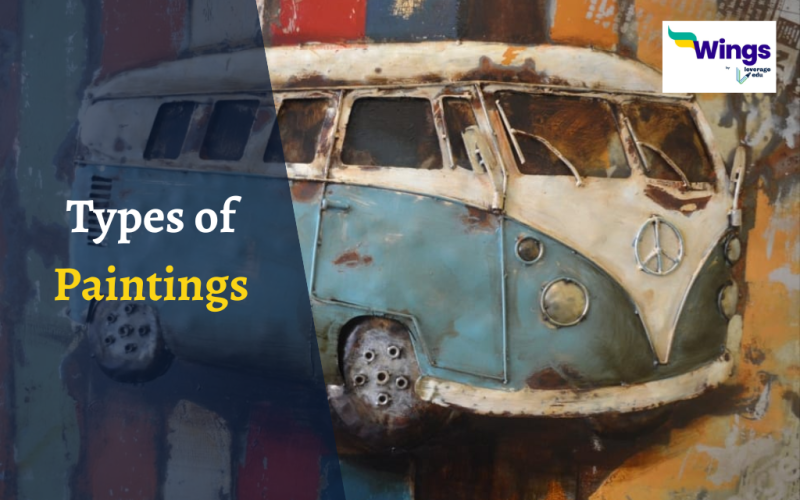Indian folk crafts and artwork are incredibly colourful, unique, and alluring examples of the vastly diverse culture of Indian art. There are various different types of paintings. Each painting style symbolises a tradition, a custom, or a philosophy that has been handed down from one generation to the next. Different painting techniques are popular in different places. The majority of Indian painting techniques have traditionally been discovered as wall paintings or murals. Eventually, these painting techniques on materials like paper, canvas, and cloth were brought about by urbanisation.
Here are the top 5 well-known Types of Paintings in Indian folk painting techniques:
Madhubani Paintings
The Madhubani style of Indian art, which began as wall art in the Mithila district of Bihar, is one of the most well-known. The British colonial William G. Archer, who was surveying the damage following the devastating Bihar earthquake in 1934, was the first person to make the discovery of this magnificent folk art style. The stunning artwork on the homes’ exposed interior walls astounded Archer. Madhubani’s portrayal of heritage and customs is beautiful because it is straightforward and emotive.
Warli Paintings
This heritage of ancient Indian painting dates back 2,500 years. Warli paintings from Maharashtra’s Thane and Nasik regions are intimately related to the tribe’s social customs and natural surroundings. The daily activities of the locals in that community, including as farming, dancing, hunting, and prayer, are shown in warli paintings. Women would traditionally use twigs to create colourful drawings with rice paste on the mud walls of tribal homes to commemorate harvest or wedding celebrations. Simple geometric patterns in white on a red or yellow background are used to represent scenes from daily life. The linear, monochrome tones of Warli’s art are reminiscent of the style of prehistoric cave paintings.
Kalighat Painting or Bengal Pat
The Kalighat artwork style first appeared in Calcutta around the Kali Shrine in the second half of the 19th century. The term “Kalighata Pata” originates from the collective of “patuas” who produced these paper decorations. By portraying everyday scenes and mythological gods in a straightforward yet appealing manner, they developed into the recognised Kalighat school of painting. The fast, smooth, free-flowing shapes of paintings done in the Kalighat style define them. This painting method has impacted many artists, but Jamini Roy, an iconic figure in Indian art, has drawn the most attention.
Phad
A thousand years have passed since the beginning of the Phad narrative scroll painting tradition in Rajasthan. Tales of local deities and heroes are written on horizontal fabric scrolls that have been decorated in yellow, red, and orange hues. Combat scenes, adventure tales, legendary romances, and the grandeur of Indian regal states are all shown in the Phad scrolls. The ability of the style of the Phad painting to combine multiple storylines into a single work while preserving the beauty of artistic expression mesmerises the viewer.
Kalamkari
This organic hand and print block technique, which dates back three thousand years, was historically used to construct storytelling scrolls and panels. This gorgeous folk painting has a lot of Persian motifs. The name of the art form known as kalamkari, which was developed in Andhra Pradesh, is derived from the word kalam, a word that means “pen.” The stylized animal shapes, floral themes, and mehrab patterning that are so prevalent in Kalamkari paintings are also present in Kalamkari textiles.
This was all about Types of Paintings. Visit our General Knowledge Page to discover more intriguing articles about Art and Culture. Get in touch with the experts at Leverage Edu in order to kickstart your study abroad journey!
 One app for all your study abroad needs
One app for all your study abroad needs













